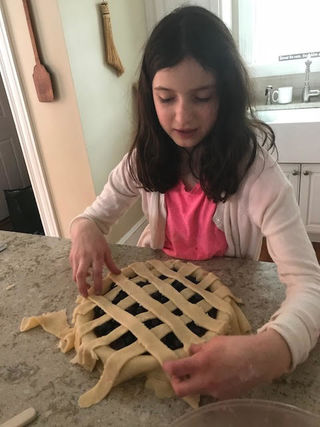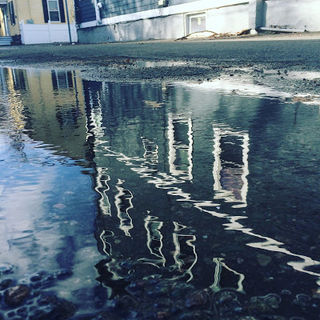School Leadership 2.0
A Network Connecting School Leaders From Around The Globe
How Schools Thwart Passions
How Schools Thwart Passions
Pursuit of passions requires time for play and self-directed education.
Posted Nov 25, 2018
This post is a somewhat modified version of the transcript of a TEDx talk I delivered in May, 2018.
Follow your passions. That’s what almost every commencement speaker says to the new graduates. It’s almost cruel. If all you’ve been doing is school and school-like stuff, how do you have any idea what your passions might be or how to follow them? To find and follow your passions you need lots of time and freedom to play. Play, almost by definition, IS following your passions. But we’ve pretty much removed play from young people’s lives.
Over the past several decades we’ve continuously increased the amount of time that children spend at school, and at schoolwork at home, and at school-like activities outside of school. We’ve turned childhood into a time of résumé building. You don’t build passions by building a résumé, trying to impress other people. You build passions by doing what you love, regardless of what others think. It’s no surprise that people who are famous for their passionate achievements have often declared their dislike or even hatred of school. For quotes about schooling from 50 such people, see here.
Wounded by School
Some years ago, Kirsten Olson, who was then a Harvard graduate student, began to conduct research on the ways that highly successful people were inspired by their experiences at school. She hoped to document how passions were kindled by school. But her early findings led her to turn that thesis around by 180 degrees. The book that eventually came out of that work is entitled Wounded by School. [For my review of the book, see here.] Here is quotation from the book’s forward, written by her thesis advisor Sara Lawrence-Lightfoot: "In her first foray into the field--in-depth interviews with an award-winning architect, a distinguished professor, a gifted writer, a marketing executive--Olson expected to hear stories of joyful and productive learning…. Instead, she discovered the shadows of pain, disappointment, even cynicism in their vivid recollections of schooling. Instead of the light she expected, she found darkness.And their stories did not merely refer to old wounds now healed; they recalled deeply embedded wounds that still bruised and ached, wounds that still compromised and distorted their sense of themselves as persons and professionals."
Since the time when Olson’s respondents would have been in school, school has become even more oppressive. Recess has been reduced or removed. Creative activities have been largely removed from the curriculum. Homework has been increased. All in the name of improving scores on multiple-choice, one-right-answer standardized tests. The results of all this are not surprising. Research has shown that over these same decades, creative thinking has declined at all grade levels (here); and anxiety, depression, and suicide among young people have increased (here and here). A 2014 survey by the American Psychological Association found that teenagers were the most stressed-out people in America, and 83% of them attributed their stress to school (here). These are not conditions that promote the development of passionate interests.
My brother Fred
Now I’m going to switch to something happier, and tell you about my youngest brother Fred Carlson. His last name is different from mine because he has a different father. Fred is 12 years younger than me, so he started 1st grade in public school the same year I started college. He lasted there through 4th grade. Around that time my mother became something of a hippie and moved onto a Vermont commune with my younger brothers. Fred left public school then and attended a little free school, which my mother helped to start. The school had no imposed curriculum and he could do there whatever he wished.
That school wasn’t certified as a high school, however, so, at age 14, he enrolled in 9th grade at the local public school. On his second day there the principal told him, “We don’t like you hippie types around here.” So he left and never went back. Then, with no school, he hung around the commune for a couple of years and helped to build a house. He got interested in wood and carpentry. He also got interested in music and learned to play guitar and banjo.
When he was 16 he enrolled in a publicly supported program designed for high-school dropouts. The guy who ran the program asked him what he’d like to do, and he said, “I’d like to build a banjo.” Nobody there knew anything about instrument building, but the head of the program helped Fred find a local person, a guy named Ken, who had a woodworking shop and knew some things about banjo building. And so, with Ken’s help, Fred built a banjo. After that, Fred used the small sum of money that his father had saved for his education to take a 6-week course at a guitar-building school and to purchase the equipment he needed to set up his own shop. The rest is history.

By the time Fred was 21 years old, one of his beautiful guitars was on display at the Smithsonian Museum. Ever since then he’s continued to make one instrument after another, each one different from any of the others; each one a new invention. He is famous among luthiers for his artistry, creativity, and craftsmanship. (For one example, see the inserted photo; for other examples, see here.) Fred believes, and so do I, that if he had stayed in school he would never have found his passion.
Self-Directed Education as the Pursuit of Passions
I’ve spent part of my academic career researching the outcomes of Self-Directed Education—that is, outcomes for people who did not go to a curriculum-based school, but, instead, educated themselves by pursuing their own interests. These include, many years ago, a study of the graduates of the Sudbury Valley School, in Massachusetts, where students, from age 4 on through late teenage years, are free all day to pursue their own interests; and, more recently, a study of grown unschoolers (see here and here). Unschoolers are people who for legal purposes are homeschoolers, but are not bound by a curriculum and are continuously free to pursue their own interests. The most interesting finding, for our concern now, is that a high percentage of these young adults were pursuing careers that were direct extensions of passionate interests they had developed as children in play. Here are a few examples:
- A girl who loved to play with boats went on, as a teenager, to apprentice herself to a ship captain and then became captain, herself, of a cruise ship.
- Another young girl played with dolls, as many girls do. Then she started making doll clothes; then clothes for herself and her friends. At the time of our study she was head of a pattern-making department in the high-fashion dress industry.
- A boy was passionate about all kinds of constructive play. He would make whole villages and factories, to scale, out of modeling clay. As a teenager he’d hang around local garages and learn about automobile mechanics by asking and watching. At the time of the study he was a much sought-after machinist and inventor.
- Another child fell in love with science fiction. Through that he discovered mathematics and became passionate about it. He went on to become a math professor.
- Still another was obsessed with computers as a teenager. At the time of the study he was 22 years old and founder and head of a very successful software development company
- A girl fell in love with circuses when she was 3 years old and began training to become a performer at age 5. By the time she was a teenager she was performing professionally as a trapeze artist, and from age 19-24 she and her best friend founded and ran their own contemporary circus company.
- A boy became passionate about making YouTube vides with friends at age 11. In his teens he began to study filmmaking. His experience and passion led him to be hired, at age 18, as production assistant by a major film company. At age 20, at the time of the survey, he was working with a famous director in Los Angeles on the production of a major film.
- A boy by age 15 was pursuing three passionate interests—wilderness hiking, paragliding, and photography. At age 21, at the time of the survey, he was successfully pursuing a career as an aerial wilderness photographer, combining all three of his passions.
- A girl who had previously been in a traditional school revolted, at age 13, and left school never to return. She then developed passionate interests in art, revolutions, and wildlife. At the time of the survey, at age 28, she was a full-time Greenpeace activist, fundraiser, and manager.




These are just some of the many examples documented in my research. All of these people were able to discover and pursue their passions because they had left, or had never enrolled in, a curriculum-based school.
More recently I asked some of my unschooling friends about their young children’s passions. Here are three examples of what I learned:
- Kerry McDonald’s daughter Molly has several passionate interests, one of which is baking. When someone asked her, when she was 9 or 10 years old, what she wanted to be when she grew up, she replied: “A baker, but I already am one." One thing I’ve learned is that people on the Self-Directed Education path don’t divide life into a period of preparing for the future followed by a period of living that future. They don’t distinguish between learning and living or learning and doing. That’s true when they are children and it’s still true when they are adults.
- Molly’s younger brother Jack is heavily into photography. He particularly admires and emulates the work of the famous landscape photographer Ansel Adams. I’ve attached one of Jack’s artistic photographs, called “reflections.”
- Akilah Richards’s daughter Marley has a beautiful voice and is deeply into voice acting. By age 13 she already had gigs providing the voice for animations and fan fiction audios. Her voice acting has also led her to learn Japanese, because some of the works she most enjoys were produced in Japan. By age 14 she was tutoring another young person in Japanese.
JOIN SL 2.0
SUBSCRIBE TO
SCHOOL LEADERSHIP 2.0
Feedspot named School Leadership 2.0 one of the "Top 25 Educational Leadership Blogs"
"School Leadership 2.0 is the premier virtual learning community for school leaders from around the globe."
---------------------------
Our community is a subscription-based paid service ($19.95/year or only $1.99 per month for a trial membership) that will provide school leaders with outstanding resources. Learn more about membership to this service by clicking one of our links below.
Click HERE to subscribe as an individual.
Click HERE to learn about group membership (i.e., association, leadership teams)
__________________
CREATE AN EMPLOYER PROFILE AND GET JOB ALERTS AT
SCHOOLLEADERSHIPJOBS.COM
New Partnership
Mentors.net - a Professional Development Resource
Mentors.net was founded in 1995 as a professional development resource for school administrators leading new teacher induction programs. It soon evolved into a destination where both new and student teachers could reflect on their teaching experiences. Now, nearly thirty years later, Mentors.net has taken on a new direction—serving as a platform for beginning teachers, preservice educators, and
other professionals to share their insights and experiences from the early years of teaching, with a focus on integrating artificial intelligence. We invite you to contribute by sharing your experiences in the form of a journal article, story, reflection, or timely tips, especially on how you incorporate AI into your teaching
practice. Submissions may range from a 500-word personal reflection to a 2,000-word article with formal citations.

You need to be a member of School Leadership 2.0 to add comments!
Join School Leadership 2.0